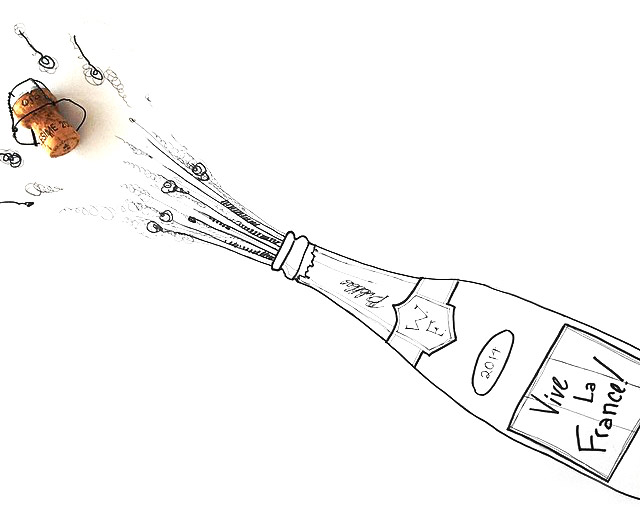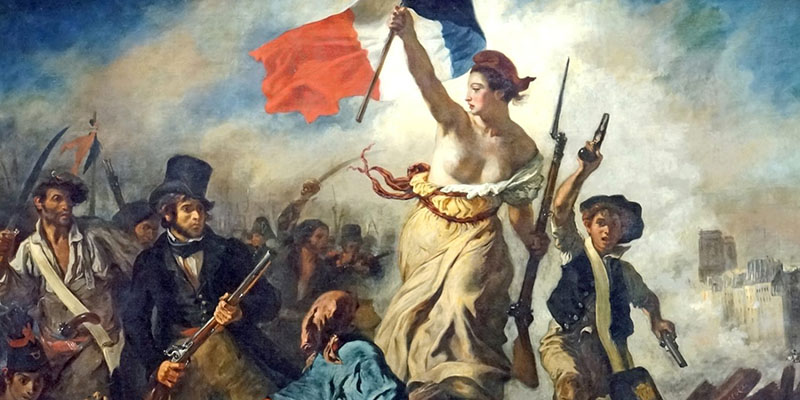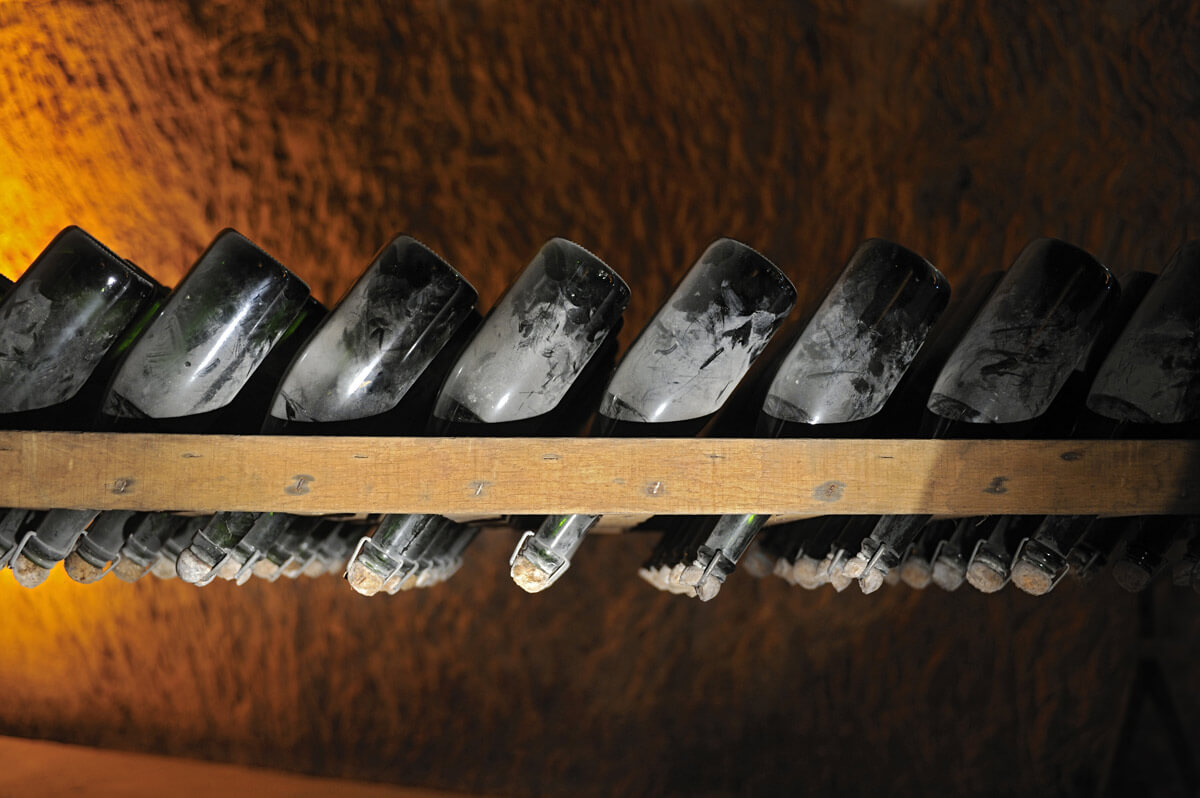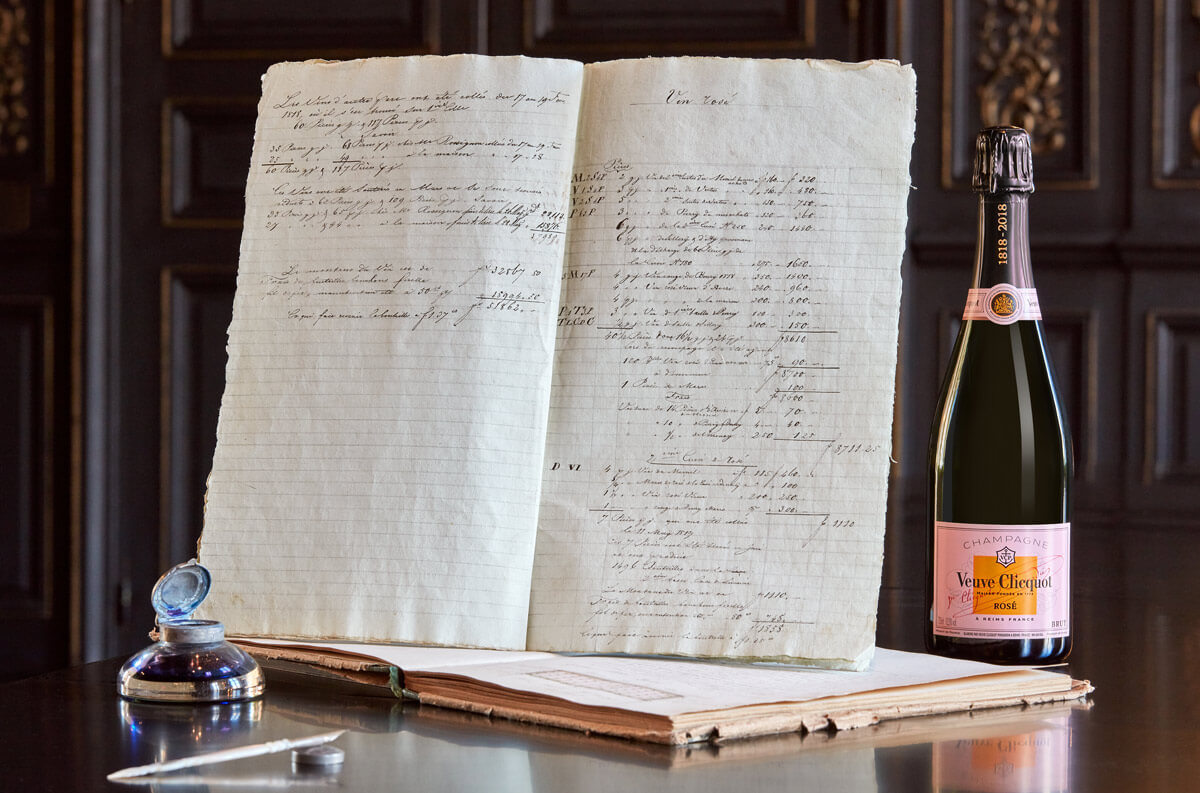This is the story of Madame Clicquot Ponsardin and her vision for Veuve Clicquot. Affectionately referred to as the “Widow Clicquot,” Barbe-Nicole revolutionized Champagne and made it the unique star it is today.

Women. Women are strong and powerful and yet remain elegant. It’s quite the paradox, and that’s coming from a woman.
Delicate. Explosive.
Refined. Sporadic.
Timid. Bold.
Name a wine as enigmatic as a female. Champagne, perhaps?
Champagne offers quite the paradox itself. Something that shouldn’t be: sparkling, explosive wine, trapped behind a cork. Six atmospheres worth of pressure, created on accident.
Today, labels like Veuve Clicquot, Dom Perignon, and Cristal line retail shelves across the world. This beverage speaks of luxury and extravagance but wasn’t always this way.
We can thank many for the Champagne we have today, but one woman stands out.
Her name was Barbe-Nicole. She was a bold pioneer of Champagne, and a bad ass lady (before being a bad-ass lady was a thing).

Barbe-Nicole: The Lady Herself
Born: December 16, 1777
Her story starts ninety miles east of Paris in Reims, France. Barbe-Nicole grew up as the eldest daughter of a wealthy textile industry tycoon: Ponce Jean Nicolas Philippe.
Barbe-Nicole was a tiny woman, probably no taller than four and a half feet. She had light-colored hair and grey eyes.
Visually, she was nothing extraordinary, but her true value had nothing to do with wealth or looks.
It wasn’t until shortly after the French Revolution, when she was thrust into the world of wine, that Barbe-Nicole found her purpose.

From Extravagance to Stoicism
The French Revolution turned the family’s boisterous wealth into something that needed to stay under wraps.
Amid the political rebellion, Barbe-Nicole’s affluent father joined a radical fringe group called the Jacobins. This group outwardly rebelled against the monarchy and its wealth.
At this point, the family lived a reserved life because showing riches and prosperity was dangerous.
Still, Ponce Jean Nicolas Philippe wanted a bright future for his eldest daughter. So, at twenty years old, she married François Clicquot, the son of another wealthy textile family (who also dabbled in wine).
Barbe-Nicole, The Good Wife
Her new husband, François, always dreamed of entering the Champagne business, and their ample dowry made this possible.
Within the first months of their marriage, the couple chose parcels of property for grape growing.
For some time, François was the face of the company, while Barbe-Nicole remained in the background. Still, she worked alongside her husband, learning the ins and outs of winemaking and working in the vineyards.
At the time, women of the era were directed towards a reproductive life. However, like many other women in Champagne, Barbe-Nicole wanted to do more.

Where does the name “Veuve Clicquot” come from?
Veuve means “widow” in French. This is where the story takes a turn.
François died of typhoid fever in 1805 at just 30 years old (Barbe-Nicole was just 28). Surprisingly, Barbe-Nicole took over the company.
Without batting an eye, the young “Widow Clicquot” took affairs into her own hands. Neither her gender nor social class defined her. She had a fire, a determination, and a vision for her brand.
Barbe-Nicole handled everything from international strategy to wine production. Her role became more than just business; it pivoted towards her noteworthy developments in marketing and technological innovation.
“In an era when women were excluded from the business world, she dared to assume the head of the company, a role she undertook with passion and determination.”
– Veuve Clicquot website

Innovations in Marketing for Veuve Clicquot
Madame Clicquot became the first woman to run a Champagne house based on direct sales. To increase profits, she eliminated middlemen and sold wines directly to customers.
She was constantly working on the brand image of Champagne and Veuve Clicquot to make it feel luxurious.
You must remember that Champagne in Barbe-Nicole’s time was cloudy and incredibly sweet — like soda.
In the book, The Widow Clicquot, Tilar J. Mazzeo notes that,
“Champagne sold in France during their lifetime often had two hundred grams of residual sugar. The Russians liked it sweeter still.”
For comparison’s sake, a can of Coke contains approximately 113 g/L of sugar.
Barbe-Nicole’s Innovations for Veuve Clicquot
Here are a few of the many bold innovations Madame Clicquot made to the Champagne industry:
- Madame Clicquot created an identity for Champagne outside of France. The brand was popular early on in Russia.
- She bottled the first recorded vintage Champagne in 1810.
- Clicquot innovated the Remuage (“rem-moo-ahj”) system – a technique that clears sparkling wine of cloudy yeast after fermentation. (scroll down to learn more)
- In 1818, Madame Clicquot made the first rosé Champagne to contain red wine when she blended some of her red Pinot from Bouzy with Champagne (previously, rosé Champagne had been made through coloration with elderberries).

Making Champagne Sparkle
Champagne of this time was alright. The wines were sparkling and sweet, but they were also cloudy.
Cloudy with sludgy yeast floating around in the bottle from the second fermentation.
Madame Clicquot questioned, “How can this be better?” She felt a clear Champagne would market itself better than a “muddy” one.
At this time, the only way to remove yeast sediment from a bottle involved expensive drugs, clarifying agents, and elaborate processes.
Madame Clicquot devised a simple concept: store bottles upside down to collect sediment in the necks. She “riddled” her kitchen table with holes just large enough to fit in the necks of Champagne bottles.
After six weeks, Madame Clicquot created the first system to easily remove the sediment from the bottle.
Remuage Process
- Wine bottles rest at an angle so yeast collects in the neck of the bottle.
- Yeast is expelled when the bottle is opened due to internal pressure.
- A small amount of sugar and grape juice is added back to refill the bottle.
- Final product = a clear wine.
Madame Clicquot’s Remuage system helped to both clarify the wines and produce quality wines in scale at a decent price.
Riddling tables and gyro palettes are still used today to accomplish the same process. Today, this technique is a fundamental part of Champagne production.

A Lady Of Legend
The list of her accomplishments and innovations goes on and on.
One word can sum up Madame Clicquot’s legendary history: BOLD.
A woman who broke the mold and inspired ideas for generations to come. She stands out for her impact and her unique ability to inspire.
It wasn’t just her innovations but her unique capability to bring life to Champagne as we know it today. She breathed an identity into being.
Her legacy lives on in a bottle of Champagne — not a bad place to spend eternity. Today, her name is adorned by a yellow label and scattered across shelves worldwide.
The bottle reads: “Veuve Clicquot.”